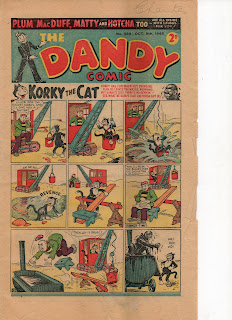Reid, born in Manchester in 1919, turned out some of the best and funniest comic artwork ever seen here in Britain. Capable of capturing so much detail combined with a brilliant wit and a natural sense of the absurd.
He made his first appearance in the Manchester Evening News, where he created and drew the strip, Fudge the Elf. This series ran for 35 years from 1938 until 1963.
This creation was Jonah, a seagoing buffoon who has the uncanny ability to sink any vessel he touches. It was Reid's brilliant sense of humour coupled with his fine draughtsmanship (look at the detail on the ship) and the ability to show the look of absolute terror on all the poor unfortunate victims who happen to have the misfortune of Jonah crossing their path.
Like Leo Baxendale, Reid would quit DC Thompson - departing in 1964. Lured over by his old friend, Baxendale, to Odhams where the page rates were better than at DCT, Reid would go on to create further characters including FrankieStein, Queen Of The Seas and The Nervs (a set he took over from Leo). Later Reid would move to IPC where he created Faceache, a boy who could use a strange ability called Scrunging to change his appearance into a myriad number of horrific monstrous creatures.
It would be Faceache that Reid would finish up drawing. In 1987 while working on a Faceache set, Reid suffered a stroke and passed away.
His work influenced many artists over the years and he continues to be sited as a favourite of comic fans in the UK.
An absolute genius.
More info:
Books
The Best of British Comic Art - Alan Clark (1989) Boxtree - Excellent chapter on Reid's work
Wikipedia - http://en.wikipedia.org/wiki/Ken_Reid_%28comics%29 - a useful primer with an outline of Reid's life.
























